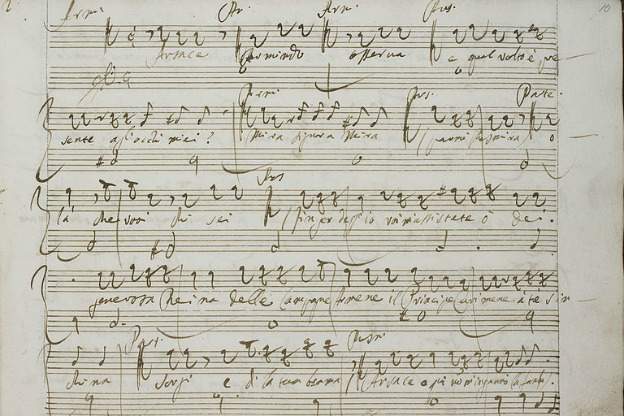
Renaissance to Baroque: a new era
The 16th century's interweaving lines of contrapuntal choral polyphony gave way in the 17th century to monody-accompanied solo song-in which treble and bass lines each had separate and distinct roles within a harmonic function. More than anything else, monody based in this new basso continuo system, ushered in the Baroque style that spread like wildfire. Â
Orlando di Lasso represents musical styles of the late Renaissance. He died in 1594 when Giuloo Caccini-a pioneer of the new baroque style-was already 40-plus years old. But Lasso's late-Renaissance sound would have still been fresh in the memory when Caccini published his famous 1601 Le Nuove Musiche. The treatise identified and explained and modeled a new and evolving baroque musical language.
Another prominent composer whose music marked the transition from the Renaissance to new baroque ideals was Claudio Monteverdi.
Roberta Invernizzi and Craig Marchitelli perform music by these and other compoers on their recording called La Bella piu bella. The CD title comes from a piece of the same name composed by Luigi Rossi. The song is a dream sequence in which a wounded lover is visited by the woman for whom he suffers in love.
Baroque to Gallant: looking forward to the Classical era
Musical styles never seem to stand still. The baroque style kept evolving, landing somewhere in the mid 18th century on a sort of pre-classical style that came to be described as "gallant." Music from this end of the baroque spectrum can be heard on a 2014 Pan Classics release of music by Leonardo Vinci. Vinci was a prolific opera composer, and it's often in his opera arias that you can hear little seeds of a new classicism developing. The arias included on this CD, performed by countertenor Filippo Mineccia, all come from operas, serenate and oratorios that Vinci composed between 1724 and 1729.
Â









